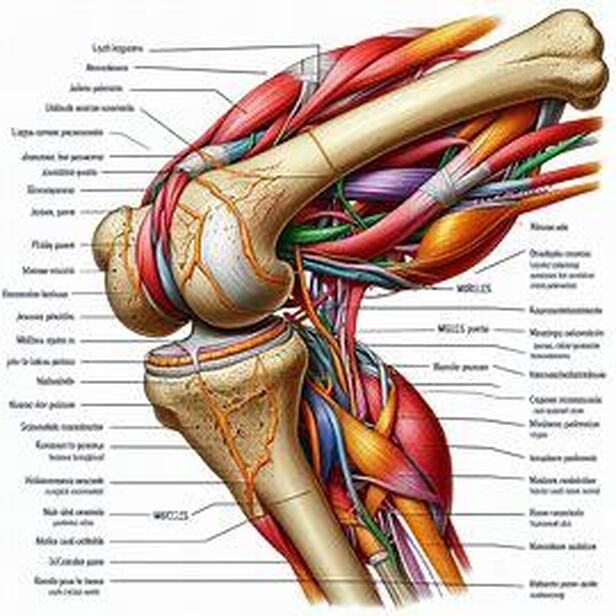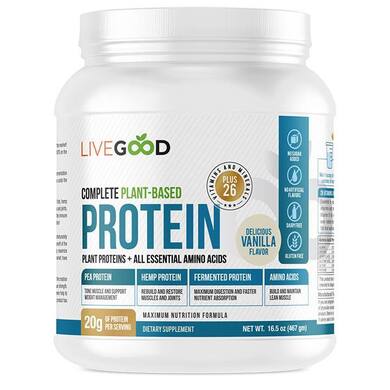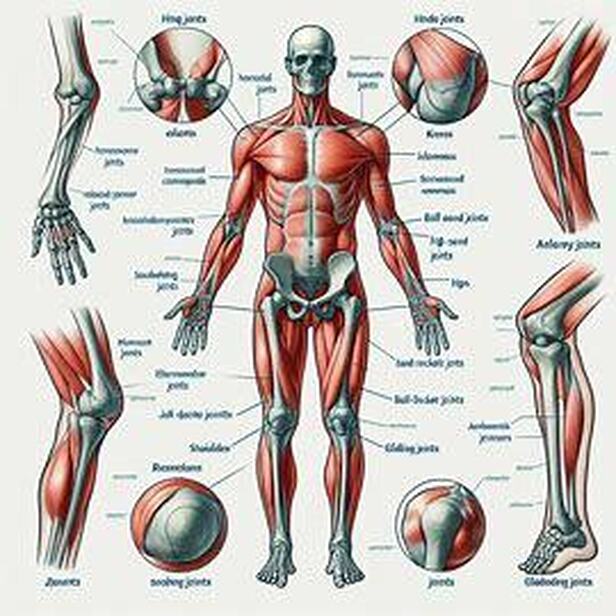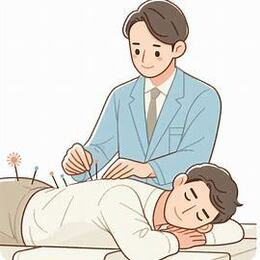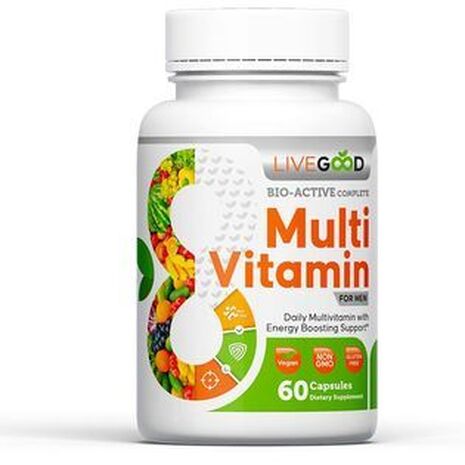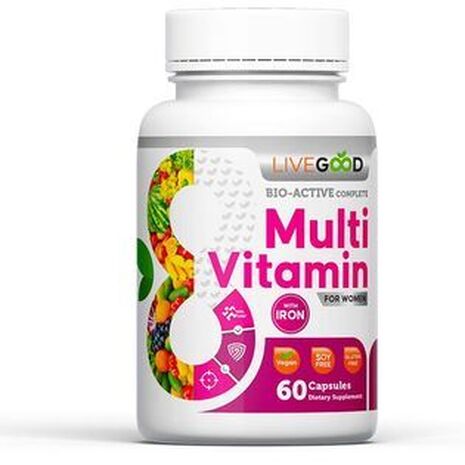IntroductionWelcome to "The Ultimate Guide to Joint Health" – your comprehensive resource for understanding, maintaining, and optimizing the health of your joints. Whether you're experiencing occasional discomfort or seeking proactive strategies to protect your joints, this guide is designed to provide you with valuable insights, practical tips, and actionable strategies to support your joint health journey. Why Joint Health Matters: Joints play a crucial role in our everyday lives, serving as the connecting points between bones and facilitating movement throughout the body. From walking and running to bending and lifting, our joints enable us to perform essential activities with ease and grace. However, when joint health is compromised, even simple tasks can become challenging and painful. |
|
The Growing Concern of Joint Issues:
In today's modern world, joint issues have become increasingly prevalent, affecting people of all ages and backgrounds. Whether it's due to sedentary lifestyles, poor dietary habits, or age-related changes, many individuals find themselves grappling with joint discomfort and limitations that impact their quality of life. Empowering You with Knowledge: Education is the first step towards empowerment. By understanding the factors that influence joint health and adopting proactive strategies to support it, you can take control of your well-being and enjoy a life of mobility, vitality, and independence. What You'll Discover in This Guide: Throughout this guide, we'll explore the fundamentals of joint health, including the anatomy of joints, common causes of joint pain, and signs of joint issues to watch out for. We'll also delve into practical strategies for maintaining healthy joints, managing discomfort, and preventing injuries. Whether you're looking to optimize your exercise routine, fine-tune your nutrition, or incorporate lifestyle habits that support joint health, we've got you covered. Take the First Step Towards Better Joint Health: We invite you to embark on this journey with us as we uncover the secrets to lasting joint health and mobility. Whether you're a seasoned athlete, a busy professional, or simply someone who wants to move with ease and comfort, let's dive in and discover the keys to thriving joints and a vibrant life! "An ounce of prevention is worth a pound of cure." This quote emphasizes the importance of taking proactive measures to maintain good health and prevent issues before they arise. In the context of joint health, it underscores the value of adopting healthy lifestyle habits and practicing preventive care to safeguard against joint discomfort and limitations.
Investing in joint health now can pay dividends in the future, allowing individuals to enjoy a life of mobility, vitality, and independence. Section 1: Understanding Joint HealthThis section provides foundational knowledge about joints, their importance in the body, common causes of joint pain, and signs of joint issues. It sets the stage for the rest of the guide by helping readers understand the basics of joint health and why it's essential to prioritize it in their overall wellness journey.
What Are Joints?
Joints are the connective tissues that link bones together, allowing for movement and flexibility throughout the body. They come in various forms, including hinge joints (like the knee and elbow), ball-and-socket joints (like the hip and shoulder), and gliding joints (like those found in the wrists and ankles). Each type of joint serves a specific purpose and requires proper care to function optimally. |
Table of ContentsIntroduction:
Section 1: Understanding Joint Health
Section 2: Maintaining Healthy Joints
Section 3: Managing Joint Pain and Discomfort
Section 4: Preventing Joint Injuries
Section 5: Lifestyle Habits for Healthy Joints
Conclusion:
Additional Resources:
|
|
The Role of Joints
Joints play a vital role in everyday activities, from simple movements like walking and bending to more complex actions like running and lifting. They act as shock absorbers, cushioning the impact of physical activity and protecting the bones from damage. Healthy joints are essential for maintaining mobility, stability, and overall functionality throughout life. Causes of Joint Pain and Discomfort There are several factors that can contribute to joint pain and discomfort, including:
|
|
Signs and Symptoms of Joint Issues Recognizing the signs and symptoms of joint issues is key to addressing them early and preventing further damage. Common indicators of joint problems may include:
Understanding these signs can help individuals take proactive steps to protect their joint health and seek appropriate care when needed. |
"Motion is lotion for the joints." This saying emphasizes the importance of movement and physical activity in maintaining healthy joints.
It suggests that keeping the joints moving and active is essential for their well-being and functionality. Understanding joint health and taking proactive steps to support it, such as engaging in regular exercise, can contribute to overall joint health and mobility. |
Section 2: Maintaining Healthy Joints

This section provides readers with practical strategies for maintaining healthy joints through exercise and nutrition. It emphasizes the importance of incorporating a variety of exercises into their routine, choosing nutrient-rich foods that support joint health, and considering dietary supplements when appropriate. By implementing these tips, readers can take proactive steps to support their joint health and reduce the risk of joint issues in the future.
Importance of Exercise for Joint Health
Regular exercise is crucial for maintaining healthy joints and supporting overall well-being. Physical activity helps to strengthen the muscles surrounding the joints, improve flexibility and range of motion, and promote the circulation of synovial fluid, which nourishes and lubricates the joints. Incorporating a variety of exercises, including strength training, cardiovascular exercise, and flexibility exercises, can help to keep joints healthy and functional.
Types of Exercises That Support Joint Health
Tips for Protecting Joints During Exercise
The Role of Nutrition in Joint Health
A balanced diet rich in nutrients plays a critical role in supporting joint health. Certain nutrients, such as omega-3 fatty acids, antioxidants, and collagen, have been shown to have anti-inflammatory and joint-protective properties. Incorporating foods like fatty fish, fruits, vegetables, nuts, and lean proteins into your diet can help to reduce inflammation, promote tissue repair, and support overall joint health.
Foods That Support Healthy Joints
Dietary Supplements for Joint Support
In addition to a balanced diet, certain dietary supplements may be beneficial for supporting joint health. These supplements often contain ingredients like glucosamine, chondroitin, MSM, and turmeric, which have been shown to reduce inflammation, support cartilage health, and improve joint function. However, it's essential to consult with a healthcare professional before starting any new supplement regimen, especially if you have underlying health conditions or are taking medication.
Importance of Exercise for Joint Health
Regular exercise is crucial for maintaining healthy joints and supporting overall well-being. Physical activity helps to strengthen the muscles surrounding the joints, improve flexibility and range of motion, and promote the circulation of synovial fluid, which nourishes and lubricates the joints. Incorporating a variety of exercises, including strength training, cardiovascular exercise, and flexibility exercises, can help to keep joints healthy and functional.
Types of Exercises That Support Joint Health
- Strength Training: Resistance exercises using weights, resistance bands, or body weight help to build strong muscles, which support and stabilize the joints.
- Cardiovascular Exercise: Activities like walking, swimming, and cycling improve heart health and promote circulation, delivering essential nutrients to the joints.
- Flexibility Exercises: Stretching and range-of-motion exercises help to maintain flexibility and prevent stiffness in the joints.
Tips for Protecting Joints During Exercise
- Warm up before exercise to increase blood flow to the muscles and prepare the joints for movement.
- Use proper form and technique to avoid putting unnecessary stress on the joints.
- Gradually increase the intensity and duration of exercise to prevent overuse injuries.
- Listen to your body and stop exercising if you experience pain or discomfort in the joints.
- Incorporate low-impact activities like swimming or cycling to reduce stress on the joints, especially if you have joint issues or arthritis.
The Role of Nutrition in Joint Health
A balanced diet rich in nutrients plays a critical role in supporting joint health. Certain nutrients, such as omega-3 fatty acids, antioxidants, and collagen, have been shown to have anti-inflammatory and joint-protective properties. Incorporating foods like fatty fish, fruits, vegetables, nuts, and lean proteins into your diet can help to reduce inflammation, promote tissue repair, and support overall joint health.
Foods That Support Healthy Joints
- Fatty fish like salmon, mackerel, and sardines, which are rich in omega-3 fatty acids.
- Berries, cherries, and other brightly colored fruits, which are high in antioxidants and anti-inflammatory compounds.
- Leafy green vegetables like spinach, kale, and broccoli, which are packed with vitamins and minerals that support joint health.
- Nuts and seeds, which provide healthy fats, protein, and essential nutrients for joint maintenance.
- Bone broth and collagen supplements, which contain collagen and other nutrients that support joint structure and function.
Dietary Supplements for Joint Support
In addition to a balanced diet, certain dietary supplements may be beneficial for supporting joint health. These supplements often contain ingredients like glucosamine, chondroitin, MSM, and turmeric, which have been shown to reduce inflammation, support cartilage health, and improve joint function. However, it's essential to consult with a healthcare professional before starting any new supplement regimen, especially if you have underlying health conditions or are taking medication.
"Use it or lose it." This saying emphasizes the importance of staying active and engaged in physical activity to maintain joint health and overall well-being.
It suggests that regular exercise and movement are essential for preserving joint function and preventing stiffness and discomfort. Exercise is key to supporting joint health and mobility, encouraging readers to prioritize physical activity as part of their wellness routine. |
Section 3: Managing Joint Pain and Discomfort
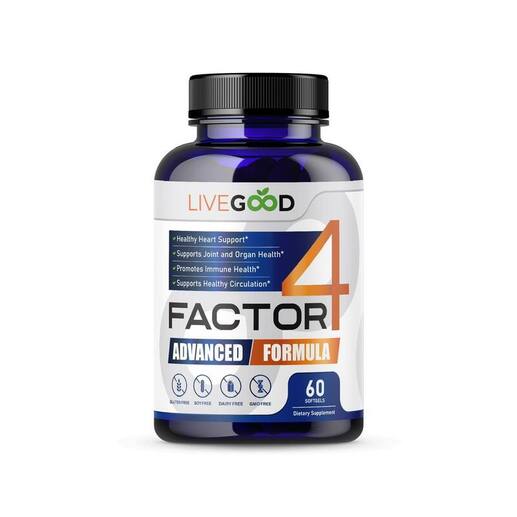
This section provides readers with practical strategies for managing joint pain and discomfort, whether it's from lifestyle factors, chronic conditions like arthritis, or other underlying issues. By implementing these tips, readers can take proactive steps to alleviate pain, improve mobility, and enhance their overall quality of life.
Lifestyle Changes to Reduce Joint Pain
Making simple lifestyle changes can have a significant impact on reducing joint pain and discomfort. Consider the following tips:
- Maintain a healthy weight to reduce stress on the joints, particularly weight-bearing joints like the knees and hips.
- Practice good posture and body mechanics to minimize strain on the joints during daily activities.
- Use supportive footwear and orthotic inserts to provide cushioning and stability for the feet and ankles.
- Avoid prolonged periods of sitting or standing in one position, as this can lead to joint stiffness and discomfort.
Strategies for Managing Chronic Joint Conditions
If you have a chronic joint condition like arthritis, there are several strategies you can use to manage symptoms and improve quality of life:
- Follow a prescribed treatment plan, including medications, physical therapy, and lifestyle modifications.
- Use assistive devices such as braces, splints, or walking aids to support and stabilize the joints.
- Incorporate gentle exercises like swimming or tai chi to improve joint flexibility and reduce pain.
- Practice relaxation techniques such as deep breathing, meditation, or guided imagery to manage stress and promote pain relief.
Alternative Therapies for Joint Pain Relief
In addition to conventional treatments, many people find relief from joint pain through alternative therapies:
- Acupuncture: This ancient Chinese practice involves inserting thin needles into specific points on the body to relieve pain and promote healing.
- Massage Therapy: Massage can help to reduce muscle tension, improve circulation, and alleviate pain associated with joint issues.
- Chiropractic Care: Chiropractors use spinal adjustments and manipulations to restore proper alignment and function to the body, which can relieve pressure on the joints and reduce pain.
When to Seek Professional Help for Joint Issues
If you're experiencing persistent or severe joint pain, it's essential to seek professional help from a healthcare provider. They can evaluate your symptoms, perform diagnostic tests if necessary, and recommend appropriate treatment options. Don't ignore joint pain or try to self-diagnose, as delaying treatment can lead to further damage and complications.
This quote encourages resilience and adaptation in the face of challenges, including managing joint pain and discomfort. It suggests that instead of waiting for pain to disappear completely, it's important to find ways to cope with and manage it effectively. There are various strategies and techniques available for managing joint pain, allowing individuals to continue living life to the fullest despite their challenges.
Section 4: Preventing Joint Injuries

This section provides readers with practical strategies for preventing joint injuries during physical activity and everyday movements. By incorporating proper form and technique, avoiding overuse, and prioritizing rest and recovery, individuals can reduce their risk of joint injuries and maintain long-term joint health and functionality.
Tips for Preventing Joint Injuries During Physical Activity
Engaging in physical activity is essential for maintaining joint health, but it's important to do so safely to prevent injuries. Consider the following tips:
- Warm up before exercise to increase blood flow to the muscles and prepare the joints for movement.
- Use proper form and technique when performing exercises to avoid putting unnecessary stress on the joints.
- Gradually increase the intensity and duration of exercise to prevent overuse injuries.
- Listen to your body and stop exercising if you experience pain or discomfort in the joints.
- Incorporate low-impact activities like swimming or cycling to reduce stress on the joints, especially if you have joint issues or arthritis.
Proper Form and Technique for Exercise and Movement
Using proper form and technique is crucial for preventing joint injuries during exercise and everyday activities. Some key principles to keep in mind include:
- Maintain proper alignment of the spine and joints throughout movements.
- Avoid overextending or hyperextending the joints, especially during weight-bearing exercises.
- Engage the core muscles to provide stability and support for the spine and joints.
- Use controlled movements and avoid jerky or abrupt motions that can strain the joints.
- Listen to your body and stop if you experience pain or discomfort, as this may indicate improper form or technique.
Strategies for Avoiding Overuse Injuries
Overuse injuries occur when the same joints and muscles are subjected to repetitive stress over time. To prevent overuse injuries, consider the following strategies:
- Cross-train by incorporating a variety of exercises into your routine to avoid overloading specific joints or muscle groups.
- Schedule regular rest days to allow the body time to recover and repair from exercise-induced stress.
- Pay attention to warning signs of overuse, such as persistent pain, swelling, or reduced range of motion, and adjust your activity level accordingly.
- Use proper equipment and footwear that provide support and cushioning for the joints during exercise.
Importance of Rest and Recovery for Joint Health
Rest and recovery are essential components of any exercise program and are crucial for maintaining joint health. During periods of rest, the body repairs damaged tissues, replenishes energy stores, and adapts to the stresses of exercise. Incorporate rest days into your routine, prioritize sleep and relaxation, and listen to your body's cues to ensure adequate recovery between workouts.
"An ounce of prevention is worth a pound of cure." This quote emphasizes the importance of taking proactive measures to prevent injuries, including joint injuries.
It suggests that investing time and effort in preventive actions, such as using proper form and technique during exercise and avoiding overuse, can save individuals from the need for extensive treatment and rehabilitation later on. Prevention is key to maintaining joint health and functionality in the long run. |
Section 5: Lifestyle Habits for Healthy Joints
This section provides readers with practical lifestyle habits and strategies for supporting healthy joints in daily life. By incorporating these tips into their routine, individuals can take proactive steps to reduce the risk of joint issues, minimize strain on the joints, and promote long-term joint health and well-being.
Tips for Maintaining Joint Health in Daily Life
In addition to exercise and proper form, there are several lifestyle habits that can support healthy joints and reduce the risk of joint issues. Consider incorporating the following tips into your daily routine:
- Stay hydrated by drinking plenty of water throughout the day to keep joints lubricated and flexible.
- Eat a balanced diet rich in fruits, vegetables, lean proteins, and healthy fats to provide essential nutrients for joint health.
- Get regular physical activity, including both cardiovascular exercise and strength training, to strengthen muscles and support joint function.
- Practice good posture and body mechanics to minimize strain on the joints during everyday activities.
- Avoid smoking and excessive alcohol consumption, as these habits can contribute to inflammation and joint damage.
Ergonomic Tips for Reducing Joint Strain
Whether at work or at home, it's important to create ergonomic environments that minimize strain on the joints. Consider the following tips:
- Use ergonomic furniture and equipment, such as adjustable chairs and desks, to support proper posture and alignment.
- Take regular breaks to stretch and move around, especially if you spend long periods sitting or standing in one position.
- Use assistive devices like cushioned mats or padded grips to reduce pressure on the joints during activities like gardening or household chores.
- Arrange your workspace to minimize reaching and bending, keeping frequently used items within easy reach to avoid unnecessary strain on the joints.
Stress Management Techniques to Reduce Joint Tension
Stress can exacerbate joint pain and inflammation, so it's essential to incorporate stress management techniques into your daily routine. Consider the following strategies:
- Practice relaxation techniques such as deep breathing, meditation, or progressive muscle relaxation to reduce tension and promote relaxation.
- Engage in activities that bring you joy and fulfillment, such as hobbies, spending time with loved ones, or participating in creative pursuits.
- Prioritize self-care activities like getting adequate sleep, eating nutritious meals, and scheduling time for relaxation and leisure.
|
Importance of Adequate Sleep for Joint Repair and Recovery
Sleep plays a crucial role in joint health, as it allows the body to repair damaged tissues and replenish energy stores. To support joint health, aim for 7-9 hours of quality sleep each night. Create a relaxing bedtime routine, minimize screen time before bed, and create a comfortable sleep environment to promote restful sleep and enhance joint repair and recovery. "Take care of your body. This quote emphasizes the importance of taking care of one's body, including maintaining joint health through lifestyle habits and practices.
It serves as a reminder that our bodies are precious and deserving of care and attention to ensure long-term health and well-being. |
Conclusion: Prioritize Your Joint Health
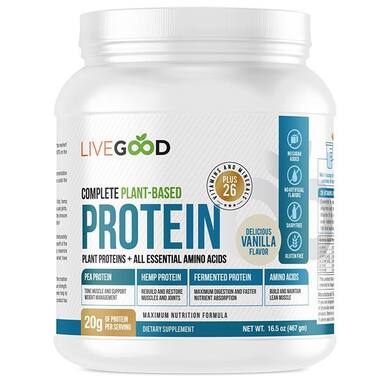
Congratulations on completing "The Ultimate Guide to Joint Health"! You've taken an important step towards understanding, supporting, and optimizing the health of your joints. As you reflect on the wealth of information and practical tips provided in this guide, remember that your joint health is a lifelong journey that requires attention, care, and commitment.
This conclusion section summarizes the key takeaways from the guide, empowers readers to take action, encourages ongoing learning and exploration, and invites them to stay connected with the joint health community. It reinforces the importance of prioritizing joint health as a cornerstone of overall well-being and encourages readers to embrace their joint health journey with optimism and determination.
Recap of Key Takeaways:
Throughout this guide, we've explored the fundamentals of joint health, including the anatomy of joints, common causes of joint pain, and strategies for maintaining and supporting healthy joints. We've discussed the importance of exercise, nutrition, lifestyle habits, and stress management in promoting joint health and reducing the risk of joint issues.
Empower Yourself to Take Action:
Armed with this knowledge, you have the power to take control of your joint health and make informed choices that support your overall well-being. Whether you're recovering from an injury, managing a chronic condition like arthritis, or simply looking to maintain healthy joints as you age, there are steps you can take to protect and preserve your joint health.
Stay Curious and Keep Learning:
Remember that joint health is a dynamic and evolving field, and there's always more to learn and explore. Stay curious, ask questions, and seek out reliable sources of information to deepen your understanding of joint health and wellness.
Take the Next Steps:
As you continue on your joint health journey, consider incorporating the tips and strategies outlined in this guide into your daily routine. Whether it's incorporating regular exercise, making nutritious food choices, practicing stress management techniques, or prioritizing rest and recovery, every small step you take can make a positive difference in supporting your joint health.
Stay Connected and Inspired:
Join us in our mission to promote joint health and wellness for all. Connect with our community, share your experiences and insights, and inspire others to prioritize their joint health and well-being.
Your Joints, Your Future:
Your joints are the foundation of your mobility, flexibility, and independence. By prioritizing your joint health today, you're investing in a future filled with vitality, resilience, and well-being. Embrace the journey, stay committed to your goals, and enjoy the benefits of healthy, happy joints for years to come.
Herbs & Spices that are known as harmful to Joint HealthWhile many herbs and spices have health benefits, there are few that have been specifically linked to being detrimental to joint health. However, some individuals may experience adverse reactions to certain herbs and spices, particularly if they have allergies or sensitivities. Here are a few examples:
Individual responses to herbs and spices can vary, and what may be detrimental to one person's joint health may not affect another person in the same way. If you suspect that certain herbs or spices are exacerbating your joint pain or inflammation, it's best to consult with a healthcare professional or registered dietitian for personalized guidance. Spices and Herbs that are known to support Joint Health
Incorporating these spices and herbs into your cooking or consuming them as supplements can help support joint health and reduce the risk of joint pain and inflammation. Consult with a healthcare professional before making significant changes to your diet or supplement regimen, especially if you have any underlying health conditions or are taking medications. |
Foods that are known to support Joint Health
Incorporating these foods into your diet can help support healthy joint health and reduce the risk of joint pain and inflammation. It's important to consume a balanced diet rich in fruits, vegetables, lean proteins, and healthy fats to support overall joint health and well-being. Foods that are known to be detrimental to Joint Health
Limiting or avoiding these foods in your diet may help reduce inflammation and improve joint health. Instead, focus on consuming a balanced diet rich in fruits, vegetables, lean proteins, whole grains, and healthy fats to support optimal joint health and overall well-being. |
Conclusion, and more
Thank you for embarking on this joint health journey with us. Here's to a future filled with strength, flexibility, and joyous movement!
Additional Resources
This Additional Resources section provides readers with a variety of resources and tools to further their understanding of joint health, explore additional information, and connect with supportive communities. Whether they're looking for books, websites, online communities, podcasts, apps, or local resources, there's something for everyone to continue their joint health journey.
Books:
- "The Arthritis Cure" by Jason Theodosakis, MD, MS, MPH
- "Healing Joint Pain Naturally" by Ellen Hodgson Brown
- "The New Arthritis Cure: Eliminate Arthritis and Fibromyalgia Pain Permanently" by Bruce Fife, ND
Websites:
- Arthritis Foundation (arthritis.org): A comprehensive resource for information on arthritis and joint health, including articles, videos, and support resources.
- National Institute of Arthritis and Musculoskeletal and Skin Diseases (niams.nih.gov): Offers research-based information on various joint conditions and treatment options.
- Mayo Clinic (mayoclinic.org): Provides expert advice and insights on joint health, including causes, symptoms, diagnosis, and treatment options.
Online Communities:
- My Arthritis Team (myarthritis.team): A supportive online community for individuals living with arthritis, offering forums, discussions, and connections with others facing similar challenges.
- Joint Health Support Group (Facebook): A Facebook group dedicated to providing support and encouragement for individuals seeking to improve their joint health and well-being through lifestyle changes and holistic approaches.
Podcasts:
- "The Arthritis Revolution Podcast": Hosted by Dr. Matt Brindley, this podcast explores innovative approaches to managing arthritis and improving joint health through nutrition, lifestyle changes, and integrative medicine.
- "Joint Health Journey Podcast": Hosted by Dr. Nicole Hemmenway, this podcast features interviews with experts in the field of joint health and wellness, covering topics such as exercise, nutrition, and mind-body techniques for managing joint pain and inflammation.
Apps:
- Joint Academy: A digital program designed to help individuals manage osteoarthritis pain through personalized exercise programs, education, and support.
- MyFitnessPal: A popular app for tracking nutrition, exercise, and overall health, which can be useful for monitoring dietary habits and physical activity levels to support joint health.
Local Resources:
- Check with your local community centers, hospitals, or wellness clinics for resources such as arthritis support groups, exercise classes tailored for joint health, and educational workshops on managing joint conditions.
Potential additional reading on joint health:
- "The Arthritis Cure: The Medical Miracle That Can Halt, Reverse, and May Even Cure Osteoarthritis" by Jason Theodosakis, MD, MS, MPH
- "Healing Joint Pain Naturally: Safe and Effective Ways to Treat Arthritis, Fibromyalgia, and Other Joint Diseases" by Ellen Hodgson Brown
- "The New Arthritis Cure: Eliminate Arthritis and Fibromyalgia Pain Permanently" by Bruce Fife, ND
- "Arthritis: What Exercises Work: Breakthrough Relief for the Rest of Your Life, Even After Drugs and Surgery Have Failed" by Dava Sobel and Arthur C. Klein
- "The Anatomy of Stretching, Second Edition: Your Illustrated Guide to Flexibility and Injury Rehabilitation" by Brad Walker
- "Arthritis: Fight it with the Blood Type Diet: The Individualized Plan for Defeating the Pain of Osteoarthritis, Rheumatoid Art hritis, Fibromyalgia, and Other Inflammatory Conditions" by Dr. Peter J. D'Adamo and Catherine Whitney
- "Yoga for Arthritis: The Complete Guide" by Loren Fishman MD and Ellen Saltonstall
- "The Anti-Inflammatory Diet & Action Plans: 4-Week Meal Plans to Heal the Immune System and Restore Overall Health" by Dorothy Calimeris and Lulu Cook
- "Living a Healthy Life with Chronic Conditions: Self-Management Skills for Heart Disease, Arthritis, Diabetes, Depression, Asthma, Bronchitis, Emphysema and Other Physical and Mental Health Conditions" by Kate Lorig RN DrPH, Halsted Holman MD, David Sobel MD MPH, and Diana Laurent MPH
- "Arthritis: What Exercises Work: Breakthrough Relief for the Rest of Your Life, Even After Drugs and Surgery Have Failed" by Dava Sobel and Arthur C. Klein
- Reader's Digest. "Foods that Harm and Foods That Heal." Copyright 2018.
- Bottom Line. “Ultimate Healing & Free Medicine” Copyright 2009
These books cover a range of topics related to joint health, including exercise, nutrition, lifestyle modifications, and self-management strategies for various joint conditions. Whether you're looking for practical advice, scientific insights, or holistic approaches to managing joint health, these resources offer valuable information to support your journey towards optimal joint health and well-being.
Organizations That Deal With Joint Health:
- Arthritis Foundation (arthritis.org)
- National Institute of Arthritis and Musculoskeletal and Skin Diseases (NIAMS) (niams.nih.gov)
- American College of Rheumatology (ACR) (rheumatology.org)
- Osteoarthritis Research Society International (OARSI) (oarsi.org)
- American Academy of Orthopaedic Surgeons (AAOS) (aaos.org)
- National Osteoporosis Foundation (NOF) (nof.org)
- The Joint Commission (jointcommission.org)
- Centers for Disease Control and Prevention (CDC) - Arthritis Program (cdc.gov/arthritis)
- Foundation for Osteoporosis Research and Education (FORE) (fore.org)
- National Psoriasis Foundation (psoriasis.org)
These organizations offer a wealth of resources, information, and support for individuals seeking to learn more about joint health, including arthritis, osteoporosis, rheumatic diseases, and related conditions. They provide educational materials, research updates, advocacy efforts, and community support networks to help individuals better understand and manage their joint health concerns.
Renowned Orthopedic Surgeons and Rheumatologists
in the United States who are known for their expertise in joint health:
- Dr. James Andrews - Renowned orthopedic surgeon specializing in sports medicine and known for his work with professional athletes.
- Dr. Richard Berger - Innovator in minimally invasive joint replacement surgery, particularly for hip and knee replacements.
- Dr. Steven Haas - Leading orthopedic surgeon specializing in knee and hip replacements at the Hospital for Special Surgery in New York City.
- Dr. William Maloney - Renowned orthopedic surgeon and past president of the American Academy of Orthopaedic Surgeons, specializing in joint replacement surgery.
- Dr. Nancy Lane - Distinguished rheumatologist known for her research and clinical work in osteoarthritis and osteoporosis.
- Dr. David Felson - Prominent rheumatologist specializing in osteoarthritis research and epidemiology.
- Dr. Joanne Jordan - Expert in rheumatology with a focus on osteoarthritis and joint health in aging populations.
- Dr. Mary Crow - Noted rheumatologist known for her research in autoimmune diseases and their impact on joint health.
- Dr. Brian Cole - Leading orthopedic surgeon specializing in sports medicine and cartilage restoration procedures.
- Dr. Joseph Bosco - Expert orthopedic surgeon and spokesperson for the American Academy of Orthopaedic Surgeons, specializing in joint preservation and sports injuries.
This list is not exhaustive, and there are many other highly skilled doctors and specialists across the United States who are dedicated to improving joint health through their clinical work, research, and advocacy efforts. If you're seeking medical advice or treatment for joint health concerns, it's recommended to consult with a board-certified orthopedic surgeon or rheumatologist who has experience and expertise in the specific condition you're dealing with.
Doctors from various parts of the world who are well-known for their work in joint health:
- Professor Tim Briggs - United Kingdom - Renowned orthopedic surgeon specializing in hip and knee replacements, known for his work in improving patient outcomes and reducing complications.
- Dr. Andreas Gomoll - Switzerland - Internationally recognized orthopedic surgeon and researcher specializing in cartilage repair and preservation techniques.
- Professor David Hunter - Australia - Leading rheumatologist and researcher known for his work in osteoarthritis, particularly in the areas of prevention and management.
- Dr. Stefan Lohmander - Sweden - Esteemed orthopedic surgeon and researcher focusing on osteoarthritis, cartilage biology, and joint preservation strategies.
- Professor Hans-Georg Pape - Germany - Prominent orthopedic surgeon and researcher specializing in joint trauma, particularly in the areas of fracture management and post-traumatic arthritis.
- Dr. Joseph Buckwalter - United States - Distinguished orthopedic surgeon and researcher known for his contributions to understanding cartilage biology and joint degeneration.
- Dr. Constance Chu - United States - Renowned orthopedic surgeon and researcher specializing in cartilage repair and transplantation techniques for knee injuries.
- Professor Hans van der Vis - Netherlands - Leading orthopedic surgeon and researcher focusing on joint preservation strategies and innovative surgical techniques.
- Dr. Eiji Itoi - Japan - Esteemed orthopedic surgeon and researcher known for his work in shoulder joint biomechanics and rotator cuff repair.
- Professor Lennart Jans - Belgium - Distinguished orthopedic surgeon specializing in hip preservation surgery and innovative techniques for treating hip disorders.
These doctors have made significant contributions to the field of joint health through their clinical expertise, research endeavors, and advancements in surgical techniques and treatment modalities. While this list highlights some notable figures, there are many other talented and dedicated physicians and researchers worldwide who are committed to improving joint health and enhancing patient care.
Partial Bibliography
- Theodosakis, Jason, Brenda Adderly, and Barry Fox. "The Arthritis Cure: The Medical Miracle That Can Halt, Reverse, and May Even Cure Osteoarthritis." St. Martin's Paperbacks, 1997.
- Brown, Ellen Hodgson. "Healing Joint Pain Naturally: Safe and Effective Ways to Treat Arthritis, Fibromyalgia, and Other Joint Diseases." Celestial Arts, 2001.
- Fife, Bruce. "The New Arthritis Cure: Eliminate Arthritis and Fibromyalgia Pain Permanently." Piccadilly Books, 1998.
- Sobel, Dava, and Arthur C. Klein. "Arthritis: What Exercises Work: Breakthrough Relief for the Rest of Your Life, Even After Drugs and Surgery Have Failed." St. Martin's Griffin, 2002.
- Walker, Brad. "The Anatomy of Stretching, Second Edition: Your Illustrated Guide to Flexibility and Injury Rehabilitation." North Atlantic Books, 2011.
- D'Adamo, Peter J., and Catherine Whitney. "Arthritis: Fight it with the Blood Type Diet: The Individualized Plan for Defeating the Pain of Osteoarthritis, Rheumatoid Arthritis, Fibromyalgia, and Other Inflammatory Conditions." Berkley, 2006.
- Fishman, Loren M., and Ellen Saltonstall. "Yoga for Arthritis: The Complete Guide." Shambhala, 2008.
- Calimeris, Dorothy, and Lulu Cook. "The Anti-Inflammatory Diet & Action Plans: 4-Week Meal Plans to Heal the Immune System and Restore Overall Health." Rockridge Press, 2015.
- Lorig, Kate, et al. "Living a Healthy Life with Chronic Conditions: Self-Management Skills for Heart Disease, Arthritis, Diabetes, Depression, Asthma, Bronchitis, Emphysema and Other Physical and Mental Health Conditions." Bull Publishing Company, 2012.
- Brindley, Matt. "The Arthritis Revolution Podcast."
- Hemmenway, Nicole. "Joint Health Journey Podcast."
- Joint Academy.
- MyFitnessPal.
- Arthritis Foundation.
- National Institute of Arthritis and Musculoskeletal and Skin Diseases (NIAMS).
- American College of Rheumatology (ACR).
- Osteoarthritis Research Society International (OARSI).
- American Academy of Orthopaedic Surgeons (AAOS).
- National Osteoporosis Foundation (NOF).
- The Joint Commission.
- Centers for Disease Control and Prevention (CDC) - Arthritis Program.
- Foundation for Osteoporosis Research and Education (FORE).
- National Psoriasis Foundation.
This bibliography includes books, podcasts, apps, organizations, and other resources referenced in "The Ultimate Guide to Joint Health" lead magnet. These sources provide valuable information and support for individuals seeking to learn more about joint health and wellness.
This article and all or part of it's content may have been written in part or in full by Art Intel; some or all images may have been created by Image Creator or other sources. This article in it's entirety is intended solely for entertainment.

